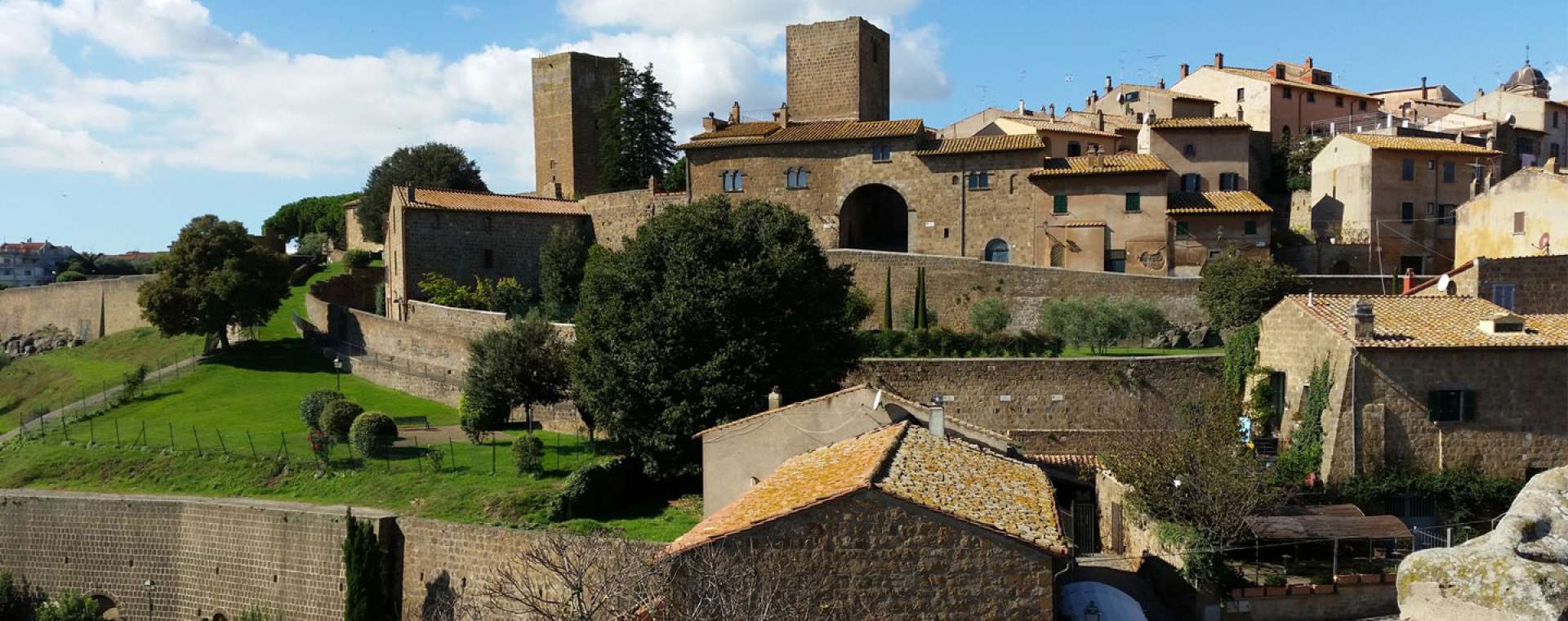Tuscania travel guide
Known variously over the centuries as Tuscana and Toscanella, Tuscania has an idyllic location. Its centre is wrapped in medieval walls, where you can perch for views over the rolling hills of northern Lazio.
It’s a sleepy place now, and well off the beaten track. But it wasn’t always so: this was a significant cultural hotspot during Etruscan times. By the 6th century AD it had its own cathedral.
Traces of former glory remain in 2 outstanding Romanesque churches, close to remains of the Etruscan and Roman town.
In the Beginning…
The hill just outside Tuscania’s walls has been inhabited since at least the Bronze Age. A scattering of Etruscan villages gradually combined to form Tuscania, which reached a peak of wealth and culture in the 4th century BC.
After the Roman takeover, Tuscania became a major stop on the Via Clodia, a trade route linking Rome with the abundant agriculture of northern Lazio and southern Tuscany.
Medieval Tuscania was beset by the usual scourges of central Italy: chronic Guelph versus Ghibelline conflict; free, self-governing commune status eventually quashed by the pope; earthquakes and plague, notably the Black Death of 1349, which killed around two-thirds of its population.
More recently, its ancient centre was largely destroyed by a 1971 earthquake that hit during Mardi Gras celebrations. The town took a decade to fully rebuild — and some ancient construction was lost forever.
Visit This
Tuscania’s architectural highlights are a pair of spectacular churches. Unusually, they are both outside the walls, on a hill just south-east of the centre.
The Basilica di San Pietro crowns the hill — probably once the heart of the Etruscan town. It was built as a cathedral; Tuscania had a bishop by 595 AD.
Notable Romanesque features include round aisle arches with columns probably recycled from local Roman ruins; a cosmatesque (geometric patterned) floor and rose window; and an atmospheric crypt that dates to the 1000s. A precious Byzantine-era fresco was destroyed by the 1971 quake.
Adjacent to the church, ruins of ancient Tuscania are preserved in the small Colle San Pietro archaeological park. You’ll need to join a tour to see round the Etruscan, Roman and medieval remnants, including Etruscan necropoli.
A short walk downhill is Santa Maria Maggiore. Tuscania’s second great church was consecrated in 1206, and has typically Romanesque stone carvings as well as later, Gothic frescoes.
Tuscania’s sleepy walled centre mostly dates from the 16th century, although cobbled streets and hidden corners occasionally reveal a medieval church. The south side of town has two lookouts over the Marta River valley towards Viterbo — and Tuscania’s two famous churches.
Parco Lavello is a little grassy balcony at the foot of Torre Lavello, a medieval lookout named after a famous mercenary captain and former governor of Tuscania, Angelo da Lavello (aka “Tartaglia”). Though a native of Basilicata, in the South, Tartaglia fought for and against most of the main players in late 14th/early 15th century central Italy, including the pope, the King of Naples, Siena and the Florentine Republic. He was eventually betrayed by Pope Martin V and beheaded in Aversa, Campania.
There’s another fine view from Piazza Basile, where a panoramic terrace is decorated with decapitated Etruscan grave statues.
Inside a former Benedictine church outside the walls, the Museo Archeologico Tuscanese was Italy’s first official Etruscan museum, and now displays valuable finds from local Etruscan and Roman tombs.
A warning: most sights in Tuscania are closed on Mondays.
Surviving ruins of ancient Tuscania are preserved in the Colle San Pietro archaeological park
Buy This
Tuscania’s gentle main street, Via Roma, has a handful of independent olive oil and wine shops, plus a small boutique selling sublime lavender products (oils, soap, cosmetics, even lavender beer) from La Piantata, a nearby organic farm.
Out of Town: Woods & a Spa
Just outside the walls, the Bosco Riserva di Tuscania is a network of paths through protected Mediterranean macchia scrub and forest. Inaugurated in 2016 for walkers and horse riding, the gentle paths lead past ancient dwellings, modern picnic grounds and a handful of Etruscan tomb complexes.
At Terme di Vulci, 17 miles west of Tuscania, you can soak outdoors in four modern thermal spring pools. The warmest (at 42°C) is filled with rust-coloured, iron-rich water. The other three pools are crystal clear; the largest even has its own island planted with olive trees. The whole place is delightfully stranded in the middle of nowhere.
Three Excursions from Tuscania
- Tarquinia: another pretty hilltop town with Italy’s biggest collection of painted tombs, in a vast Etruscan necropolis just outside the walls
- Porto Ercole: a small port with Spanish colonial forts and one of Tuscany’s best beaches
- Orvieto: about an hour’s drive north-east of Tuscania, this is Etruria’s most spectacularly located town, high on a plug of volcanic rock riddled with passages
